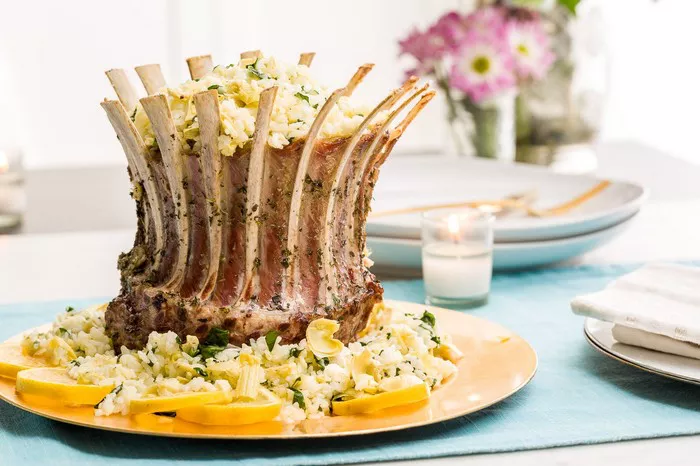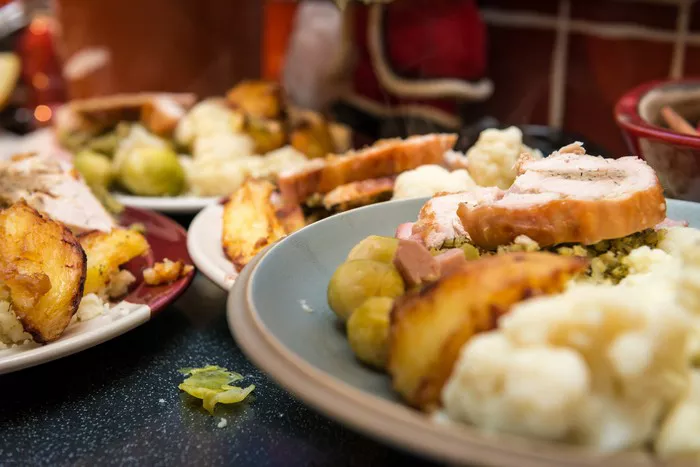Easter, a time of renewal and celebration, is often marked by gatherings centered around delectable meals. As families and friends come together to commemorate this special occasion, certain dishes have emerged as beloved staples on the Easter dinner table. In this article, we delve into the world of Easter dinner traditions, unveiling the most common and cherished dishes that grace tables around the world.
A Feast of Traditions: Easter Dinner Essentials
While Easter dinner offerings can vary based on cultural and regional preferences, several dishes have become synonymous with this festive occasion. These dishes not only showcase the rich culinary heritage of different cultures but also embody the spirit of sharing and togetherness that define Easter celebrations.
1. Roast Lamb: A Symbol of Sacrifice and Renewal
Roast lamb stands as an iconic centerpiece on many Easter dinner tables. This tradition has deep historical and religious roots, symbolizing both sacrifice and renewal. In Christianity, lamb is often associated with Jesus Christ as the “Lamb of God,” representing his sacrifice for humanity. The tender and succulent meat is traditionally seasoned with aromatic herbs and spices, roasted to perfection, and served as a flavorful main course that brings families together.
2. Glazed Ham: A Sweet and Savory Delight
Glazed ham takes center stage as another Easter dinner favorite. The combination of sweet and savory flavors encapsulates the essence of celebration. The ham is often adorned with a glaze made from ingredients like brown sugar, honey, mustard, and spices. The glaze caramelizes during roasting, creating a luscious and flavorful crust that contrasts beautifully with the tender meat. Glazed ham is not only a culinary masterpiece but also a reflection of the joy and indulgence that characterize Easter festivities.
3. Deviled Eggs: Bite-Sized Delicacies
Deviled eggs, with their delightful blend of simplicity and flavor, find their way onto many Easter menus. Hard-boiled eggs are halved, and their yolks are mixed with ingredients like mayonnaise, mustard, and spices to create a creamy filling. These bite-sized delicacies are often garnished with paprika or fresh herbs, adding a pop of color and visual appeal. Deviled eggs are not only a crowd-pleaser but also a nod to the tradition of eggs as a symbol of rebirth and new beginnings.
4. Spring Vegetables: Freshness and Vibrancy
Easter coincides with the arrival of spring, and as such, fresh and vibrant spring vegetables play a prominent role in Easter dinner spreads. Dishes like roasted asparagus, buttery peas, and glazed carrots celebrate the season’s bounty. The bright colors and crisp textures of these vegetables bring a sense of renewal to the table, complementing the overall theme of Easter.
5. Potatoes: Comforting Side Stars
Potatoes, prepared in various forms, are a beloved side dish on Easter dinner tables. Whether roasted, mashed, or scalloped, potatoes provide a comforting and hearty element to the meal. Creamy mashed potatoes and rich potato gratins offer a satisfying contrast to the main dishes, creating a balanced and flavorful dining experience.
6. Hot Cross Buns: Sweet Symbols of Easter
Hot cross buns are a delightful and symbolic addition to Easter dinners. These spiced and slightly sweet buns are marked with a cross on the top, symbolizing the crucifixion of Jesus Christ. Often enjoyed as a breakfast or dessert item, hot cross buns are a traditional treat that carries a deeper meaning while satisfying the palate with their warm and aromatic flavors.
7. Spring Salads: Refreshing and Light
Spring salads bring a refreshing and light element to Easter dinners. Featuring a medley of fresh greens, colorful vegetables, fruits, nuts, and a drizzle of vinaigrette, these salads celebrate the season’s offerings. Their vibrant colors and diverse textures contribute to the overall visual appeal of the Easter table while offering a palate-cleansing and nutritious option.
8. Dessert Delights: Sweet Endings
Easter desserts often mirror the theme of renewal and celebration. From classic carrot cake adorned with cream cheese frosting to luscious lemon tarts and airy pavlovas topped with fresh berries, dessert options abound. The sweet endings to Easter dinners encapsulate the joy and festivity of the occasion, providing a final flourish to the meal.
Embracing Tradition with Personal Touches
While these dishes represent the most common Easter dinner offerings, each family and culture infuses their own unique touches and flavors into the celebration. From regional specialties to family recipes passed down through generations, Easter dinners are a reflection of heritage, love, and culinary creativity.
Conclusion
Easter dinner is more than just a meal; it’s a time-honored tradition that brings loved ones together to share in the joys of the season and celebrate the spirit of renewal. Roast lamb, glazed ham, deviled eggs, spring vegetables, potatoes, hot cross buns, spring salads, and dessert delights collectively create a symphony of flavors that resonate with the themes of sacrifice, new beginnings, and togetherness. As families gather around the table to partake in these culinary treasures, they continue to weave the tapestry of tradition and create cherished memories that span generations.























